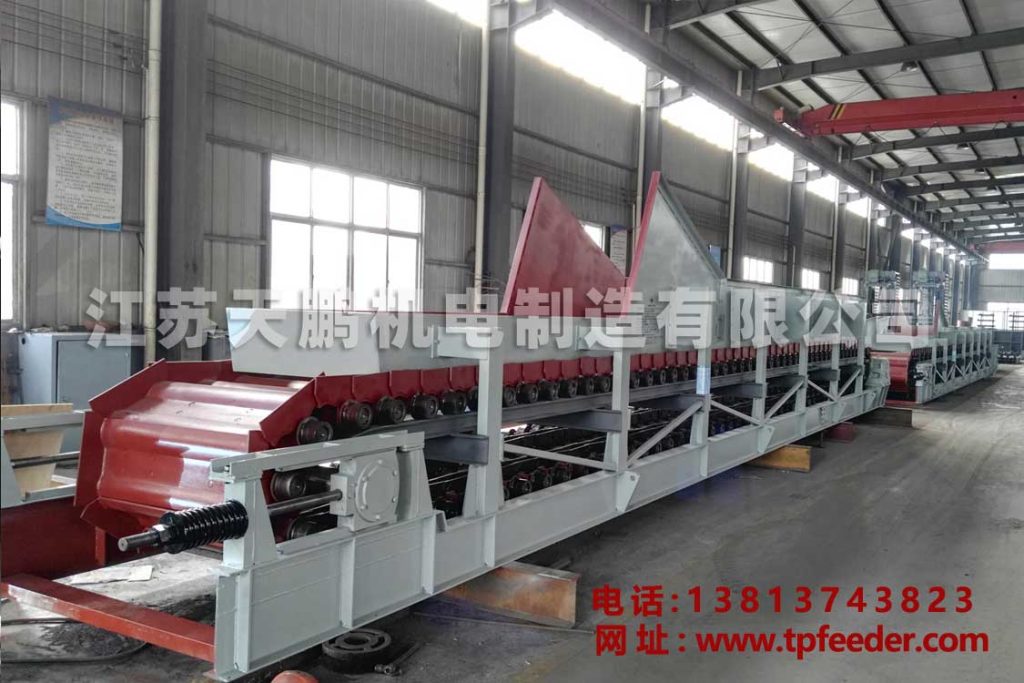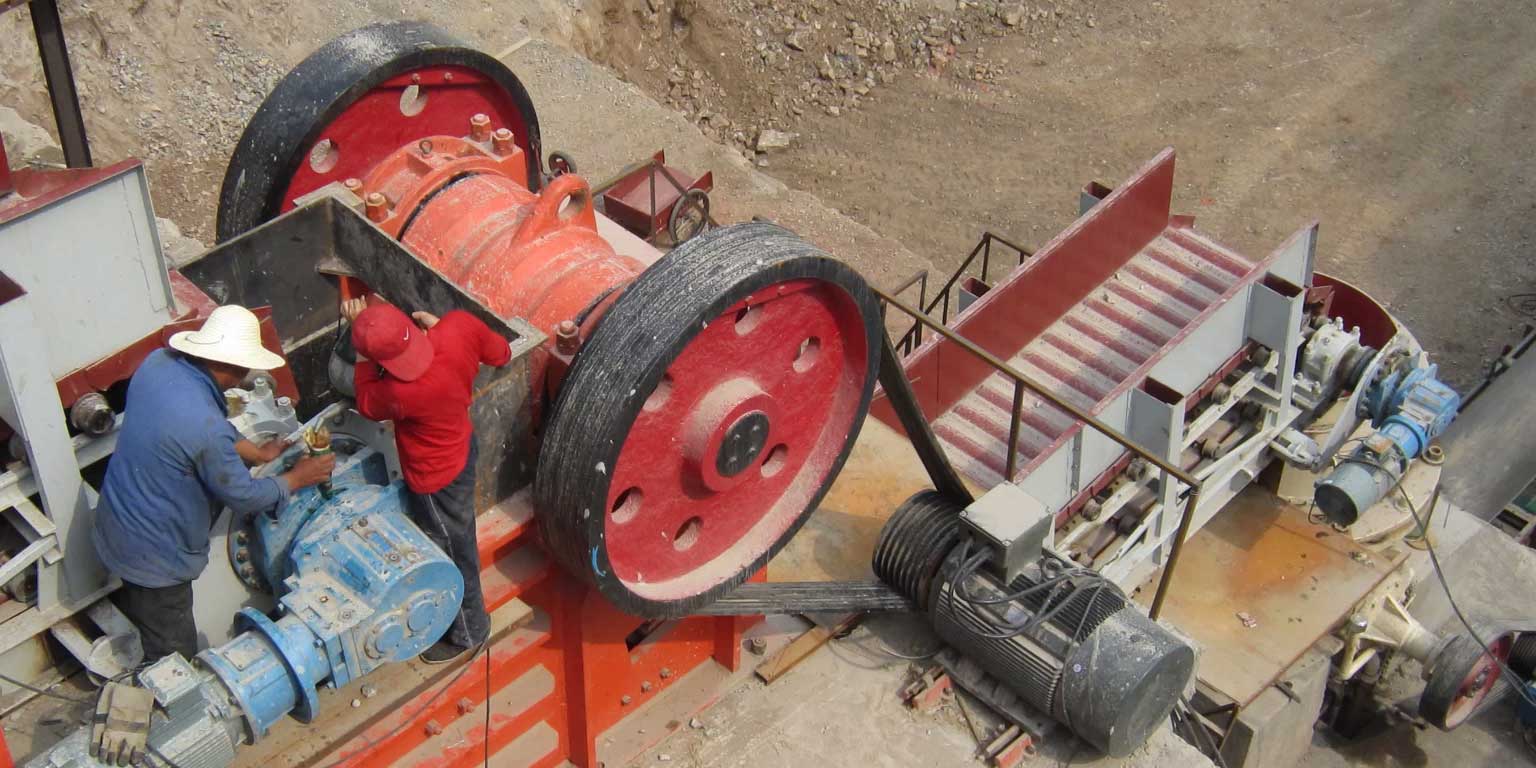Feeders are machines that are used to transport bulk materials from one place to another. They are commonly used in industries such as mining, construction, and manufacturing. Two types of feeders commonly used in these industries are apron feeders and vibrating feeders.
Apron Feeder
An apron feeder is a large machine that is used to transport heavy materials from one location to another. It consists of a series of overlapping steel plates or pans that are mounted on a chain or belt. The chain or belt is driven by a motor, which causes the plates to move forward. As the plates move forward, the material is transported along the feeder. Apron feeders are typically used to transport large, heavy, and abrasive materials such as coal, ore, and limestone.
One of the advantages of apron feeders is that they can handle a wide range of materials, including wet, sticky, and abrasive materials. They are also capable of handling large volumes of material and can be used in applications where high feed rates are required. Another advantage is that they are generally more robust and durable than vibrating feeders, making them better suited for harsh environments.
However, apron feeders also have some disadvantages. They are more expensive than vibrating feeders and require more maintenance. They also consume more power and are generally noisier than vibrating feeders.
Vibrating Feeder

A vibrating feeder is a machine that uses vibration to transport materials. It consists of a vibrating frame, an exciter, springs, and a tray. The vibrating frame is mounted on springs, which allow it to vibrate freely. The exciter is a motor that causes the frame to vibrate. As the frame vibrates, the material is transported along the tray.
Vibrating feeders are typically used to transport smaller, lighter, and less abrasive materials such as food, chemicals, and pharmaceuticals. They are also used in applications where precise feed rates are required, such as in the packaging industry.
One of the advantages of vibrating feeders is that they are relatively inexpensive and require minimal maintenance. They are also energy-efficient and can be operated at low power levels. Another advantage is that they are quieter than apron feeders, making them more suitable for applications where noise levels are a concern.
However, vibrating feeders also have some disadvantages. They are generally not as durable as apron feeders and are not suitable for handling large, heavy, or abrasive materials. They are also limited in terms of the amount of material they can transport and the distance over which they can transport it.
Comparison
In terms of performance, both apron feeders and vibrating feeders have their strengths and weaknesses. Apron feeders are better suited for handling heavy, abrasive, and high-volume materials, while vibrating feeders are better suited for handling smaller, lighter, and less abrasive materials.
Apron feeders are generally more robust and durable than vibrating feeders, making them better suited for harsh environments. They are also capable of handling a wider range of materials, including wet, sticky, and abrasive materials.
Vibrating feeders, on the other hand, are less expensive than apron feeders and require less maintenance. They are also quieter and more energy-efficient, making them more suitable for applications where noise levels and energy consumption are a concern.
When it comes to the specific features and applications of these two types of feeders, there are some notable differences. Apron feeders are typically used in industries such as mining, construction, and cement, where heavy and abrasive materials are commonly transported. They are also used in applications where high feed rates are required.
Applications
Apron feeders and vibrating feeders are used in a variety of industries and applications. Here are some of the common applications for each type of feeder:
Apron Feeders
- Mining: Heavy-Duty Apron Feeder are commonly used in the mining industry to transport large, heavy, and abrasive materials such as coal, ore, and limestone. They are used in applications such as primary crushers, stockpiling, and reclaiming.
- Cement: Apron feeders are also used in the cement industry to transport clinker, gypsum, and other materials from the quarry to the plant. They are used in applications such as raw material handling, kiln feeding, and clinker transportation.
- Steel: Apron feeders are used in the steel industry to transport raw materials such as iron ore and coke. They are used in applications such as blast furnace feeding, sinter plant feeding, and pellet plant feeding.
- Power: Apron feeders are used in the power industry to transport coal and other materials from the storage yard to the boiler. They are used in applications such as coal handling systems and ash handling systems.
- Heavy Industry: Apron feeders are also used in other heavy industries such as construction, aggregates, and pulp and paper. They are used in applications such as quarrying, sand and gravel handling, and wood chip handling.
Vibrating Feeders
- Food: Vibrating feeders are commonly used in the food industry to transport and meter food products such as fruits, vegetables, and grains. They are used in applications such as conveying, weighing, and packaging.
- Pharmaceutical: Vibrating feeders are used in the pharmaceutical industry to transport and meter powders, tablets, and capsules. They are used in applications such as tablet pressing, capsule filling, and powder mixing.
- Packaging: Vibrating feeders are used in the packaging industry to transport and meter products such as bottles, cans, and containers. They are used in applications such as filling, labeling, and sealing.
- Chemical: Vibrating feeders are used in the chemical industry to transport and meter chemicals such as fertilizers, plastics, and pigments. They are used in applications such as mixing, blending, and dosing.
- Recycling: Vibrating feeders are also used in the recycling industry to transport and meter materials such as paper, plastic, and metal. They are used in applications such as sorting, shredding, and granulating.
